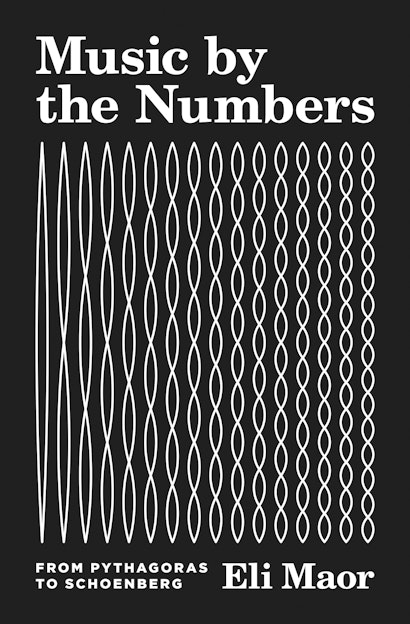Music is filled with mathematical elements, the works of Bach are often said to possess a math-like logic, and Igor Stravinsky said “musical form is close to mathematics,” while Arnold Schoenberg, Iannis Xenakis, and Karlheinz Stockhausen went further, writing music explicitly based on mathematical principles. Yet Eli Maor argues that music has influenced math at least as much as math has influenced music. Starting with Pythagoras, proceeding through the work of Schoenberg, and ending with contemporary string theory, Music by the Numbers tells a fascinating story of composers, scientists, inventors, and eccentrics who played a role in the age-old relationship between music, mathematics, and the sciences, especially physics and astronomy.
Music by the Numbers explores key moments in this history, particularly how problems originating in music have inspired mathematicians for centuries. Perhaps the most famous of these problems is the vibrating string, which pitted some of the greatest mathematicians of the eighteenth century against each other in a debate that lasted more than fifty years and that eventually led to the development of post-calculus mathematics. Other highlights in the book include a comparison between meter in music and metric in geometry, complete with examples of rhythmic patterns from Bach to Stravinsky, and an exploration of a suggestive twentieth-century development: the nearly simultaneous emergence of Einstein’s theory of relativity and Schoenberg’s twelve-tone system.
Weaving these compelling historical episodes with Maor’s personal reflections as a mathematician and lover of classical music, Music by the Numbers will delight anyone who loves mathematics and music.
Eli Maor is a former professor of the history of mathematics at Loyola University Chicago. He is the author of seven previous books, including the internationally acclaimed To Infinity and Beyond, e: The Story of a Number, Trigonometric Delights, and The Pythagorean Theorem: A 4,000-Year History (all Princeton).
"In this intriguing study, maths historian Eli Maor traces those echoes, along with the trajectories of the ‘scientists, inventors, composers, and occasional eccentrics’ behind them."—Barb Kiser, Nature
"The prolific author Eli Maor has released yet another very readable and enjoyable book on the history of mathematics from Princeton University Press. . . . As with all of Maor’s books, this one belongs in your library so that leading students can learn about unknowns like Joseph Sauveur in the fascinating story of how mathematics and music intersect."—Karl-Dieter Crisman, MAA Reviews
"For anyone who ponders the role mathematics has in music, this short and delightful book is a joy to read from cover to cover. It is full of anecdotes and interesting facts and, being by Eli Maor is intensely readable."—Phil Dyke, Leonardo Reviews
"This is a fascinating study of the reciprocal relationship between music and mathematics in the West."—David Lorimer, Paradigm Explorer
"A fascinating investigation of the relationship between math and music—what they have in common, how they differ, and how each has informed the other, from Pythagoras to Schoenberg, from violin strings to superstrings. A delightful examination of how math and culture interact."—Ian Stewart, author of Significant Figures
"Writing beautifully as he explores the relationship between mathematics and classical music, Eli Maor makes mathematics sing like a violin."—Jerry King, author of The Art of Mathematics
"I loved this book. I couldn't put down Maor's interesting fusion of music theory, mathematics, history, physics, and personal narrative. No other book blends these elements in such an appealing way."—Robert Schneider, musician and mathematician
"Music by the Numbers offers a great many original revelations about the connections between mathematics and music."—Joseph Mazur, author of Fluke: The Math and Myth of Coincidence
"Eli Maor is always a good storyteller and Music by the Numbers should interest mathematicians who enjoy classical music as well as musicians who are curious about the mathematics behind music."—Robert W. Langer, University of Wisconsin–Eau Claire


